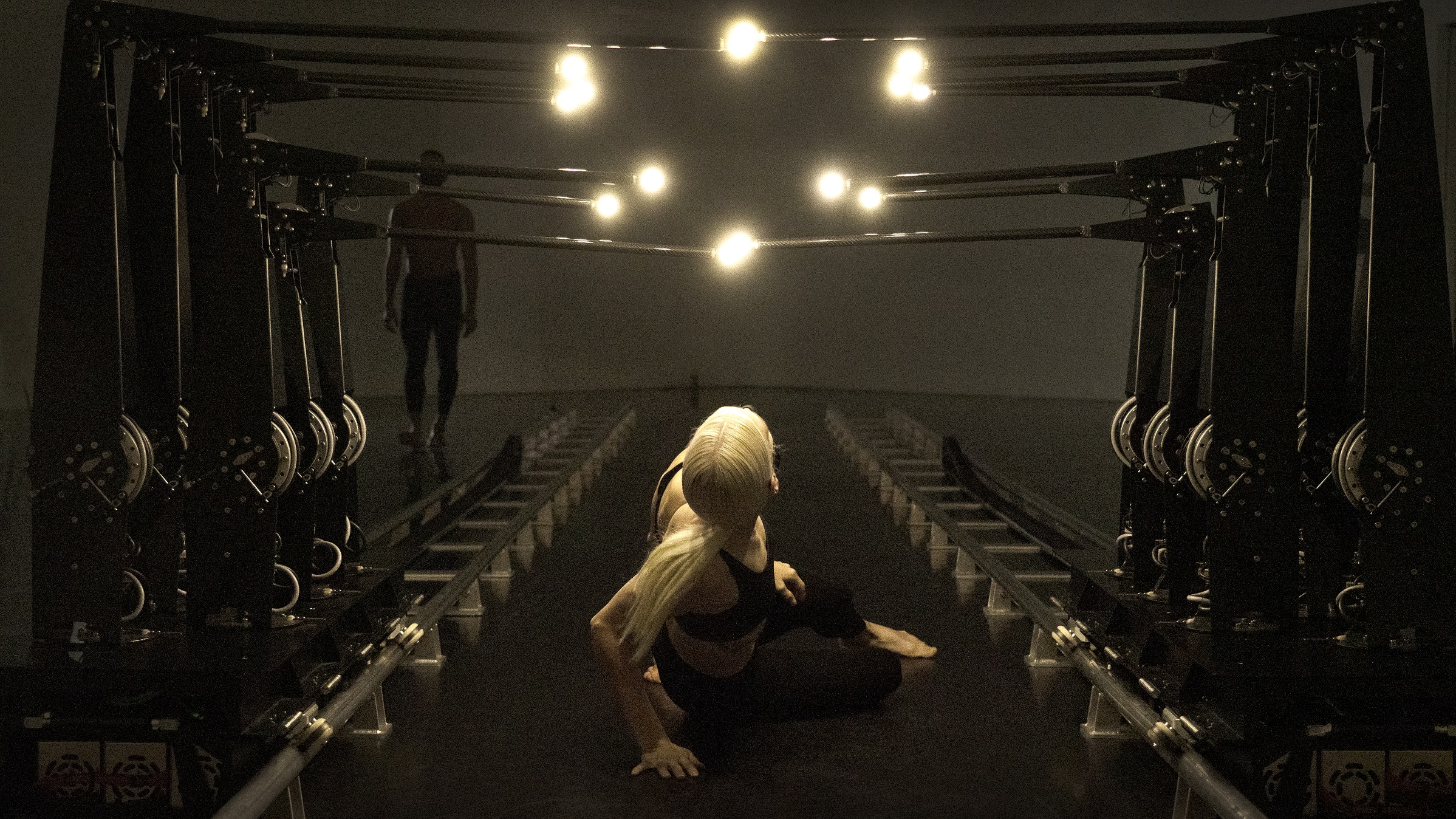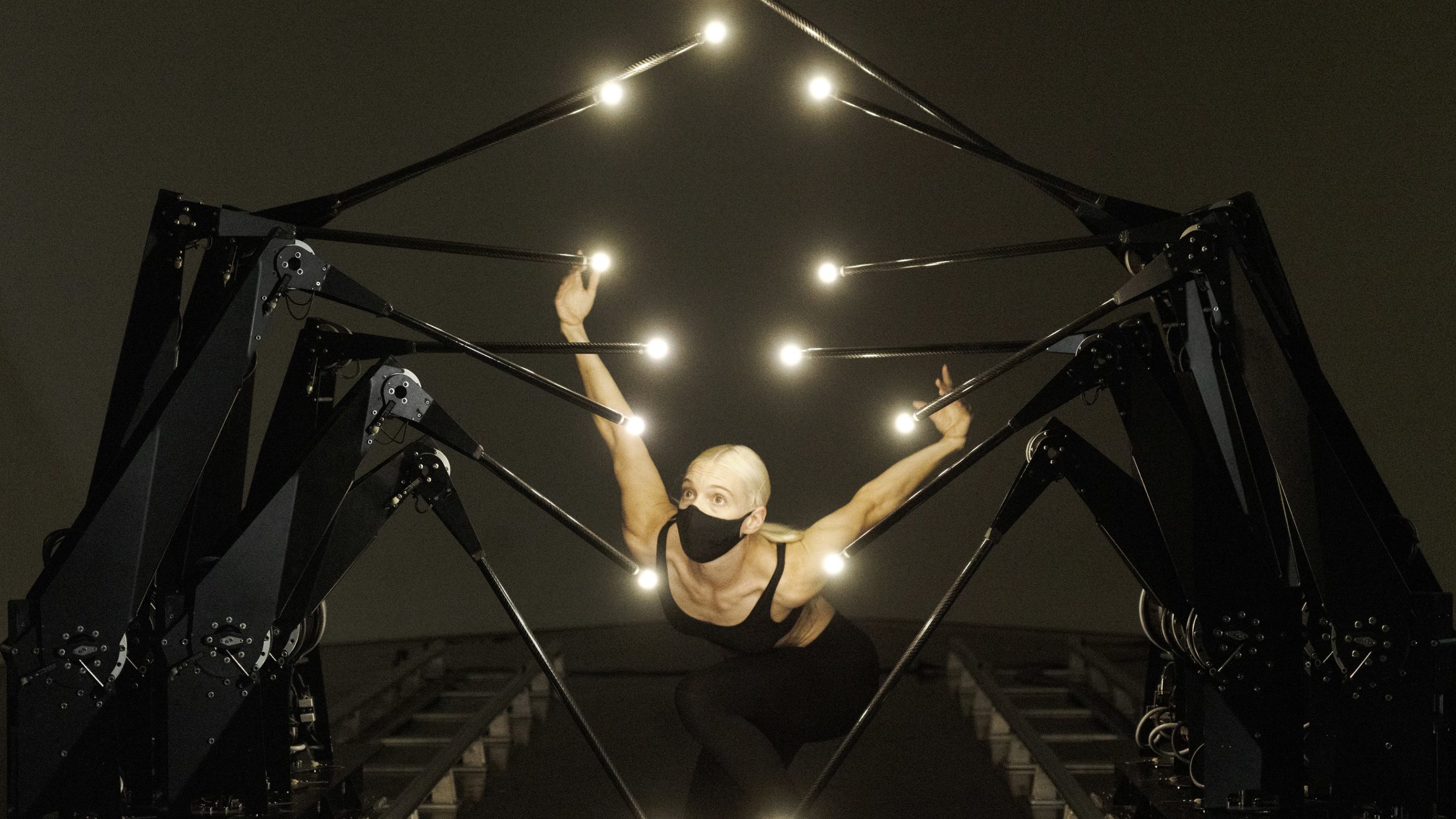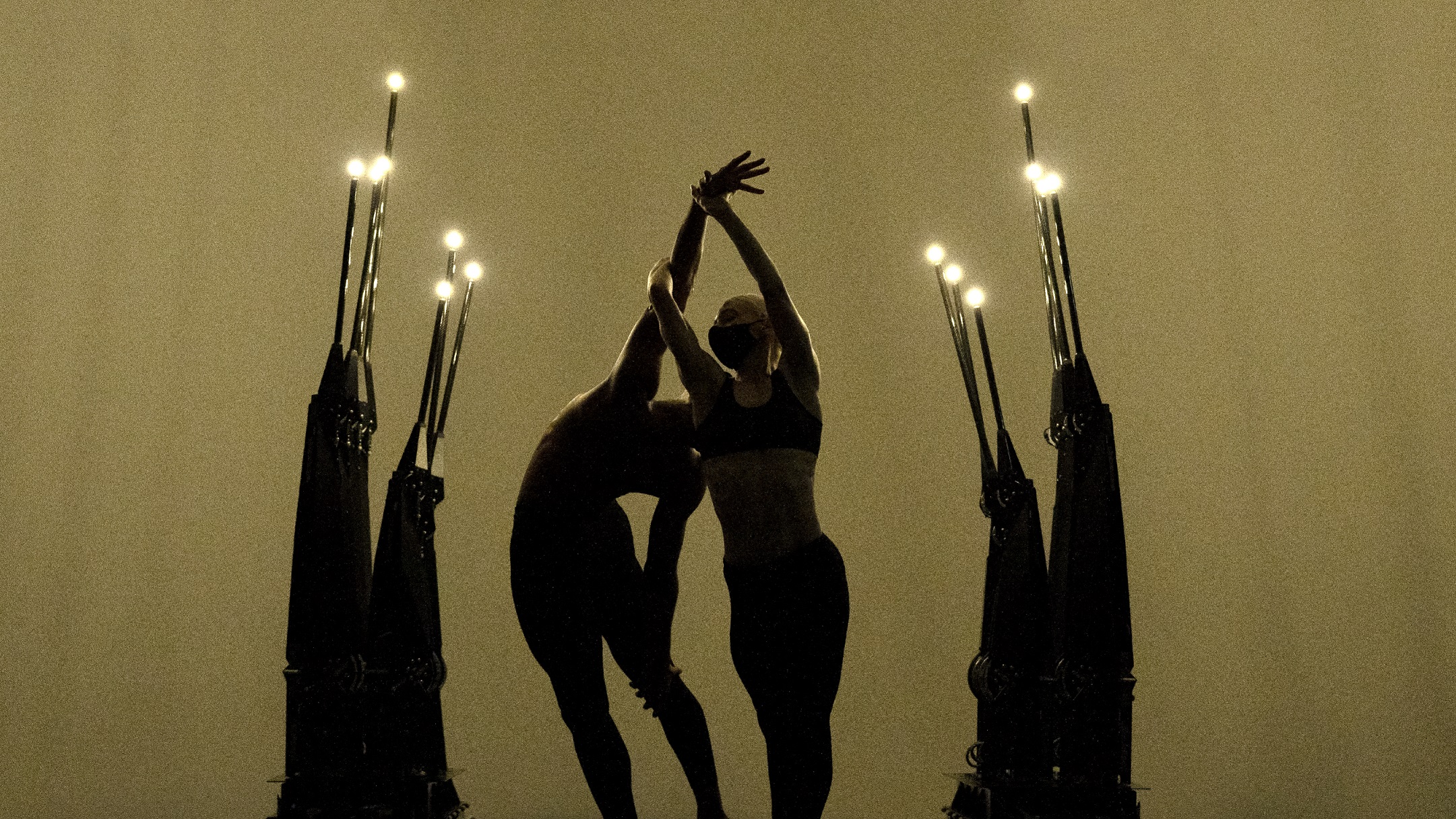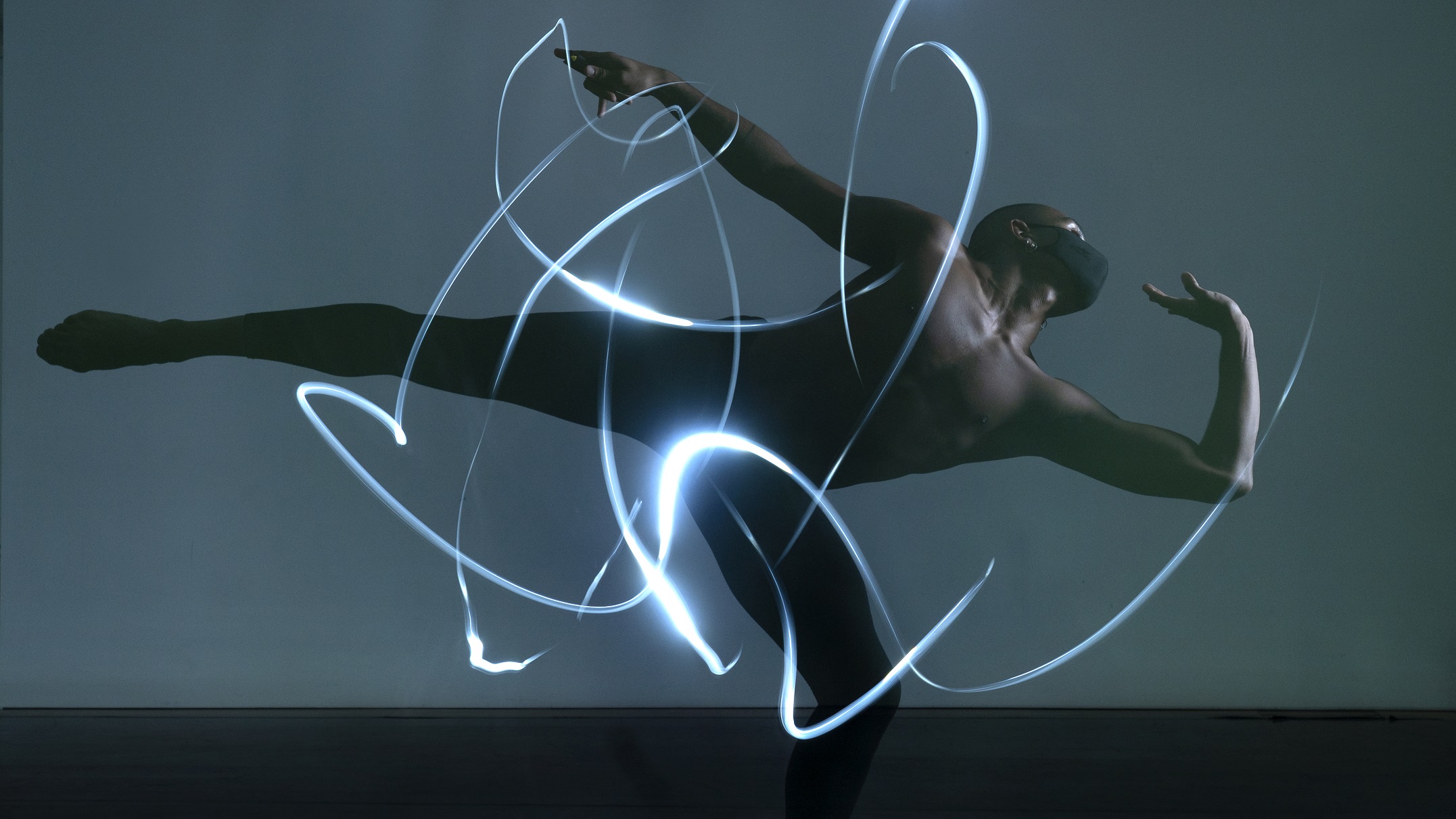If It Walks Like A Human, Is It One?
Check out the first glimpse BMW’s newest artist showcase bridging man and machine.

As technology continues to advance, it finds a greater foothold in the world of art. The latest iteration of this is the collaboration between BMW i, art group Random International, and experiential art company, SuperBlue. The three groups have come together to present “No One is an Island,” a sculpture show aided by music and dance performances.
The interaction between humans and tech blurs as dancers perform alongside mechanized counterparts. As the centerpiece sculpture questions the line between what is human and what is merely pretending to be so, dancers from Studio Wayne McGregor interact with kinetics. The sculpture, a rendition of Random International’s “Fifteen Points,” walks and moves with an eerie sort of grace.

The performance is scored by Chihei Hatakeyama, as his soundtrack adds an additional layer of fluidity to the spectacle. It all seeks to push the audience on matters of artificial intelligence versus the innately human ability to empathize. Where does one end and the other begin?
The show has its digital premiere coming soon. There will also be a live performance later into next year. For now, hear more about the showcase from the sculptors who helped bring it to life.
See our exclusive interview with Random International below.
V Why did a light installation make sense for this partnership with BMW?
RI We try our very best to not make too much sense, in general. When we started to speaking to them, we felt there was an instinctive and robust connection between our interest in how humans see and experience machines, and BMW i’s interest in how their machines respond to the human. In that sense, light is just a medium that helps the machine to express itself.

V What are the key updated elements that differentiate this rendition from previous versions of Fifteen Points?
RI This project enabled us to opening up the Fifteen Points family to the collaboration with Wayne and Chihei. In that process “No One Is An Island” shifted from a more or less formal investigation of our specific and instinctive human reaction to seeing ‘man in a machine’ towards a much broader and more inclusive exploration of whether or not we can empathise with machines, and what happens if we do.
V Can you elaborate on the synergy of empathy and interaction between dancers and this human light-form?
RI When the performance unfolds, we see two humans literally wrestling something ‘sentient’ out of the convoluted robotic sculpture until it gives us: human movement. In all it’s deficiency, it’s this simulation of ‘being human’ that we seem to be longing for. We recognise the machine not as the ‘other’ but we seem far too willing to attribute agency to it. And before we know, we start to feel with it. Which is an incredibly interesting space.

V There have been mixed emotions about the advancements of AI potentially posing a threat to human existence. How does empathy play a role between both machine and human life?
RI In order to answer this question, we feel it’s necessary to explore our somewhat desperate need to engage with systems we do not fully understand in general, on an empathic or any other level.
V What are your views on the future relationship between man and machine?
RI The current relationship seems to develop characteristics of some kind of pre-cognitive Stockholm syndrome: we’re literally in love with machines and mechanistic processes (virtual and otherwise) that have the quantifiable potential of damaging us. We think it’s of fundamental importance to develop a healthy and broad public debate around these topics and how they impact on our everyday lives.

V In its simplest terms, can you break down the advanced algorithms in which steer electrified movement?
RI Animation models that started on the basis of the incredible work of Prof Niko Troje at the BioMotionLab
in Canada and were ported to our sculpture, then thousands of line of additional code and thousands of lines of firmware to make it come to life.
V Can you speak on the sustainability component? How does the structure obtain power?
RI The sculpture uses standard power from the mains. When ‘Fifteen Points’ is shown in an exhibition format without the dancers, the sculpture works by using lidar tracking and is only activated when a human being enters the room so it is not consuming energy all the time.
Discover More
